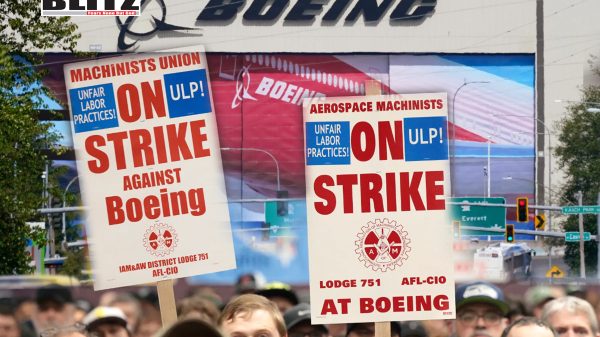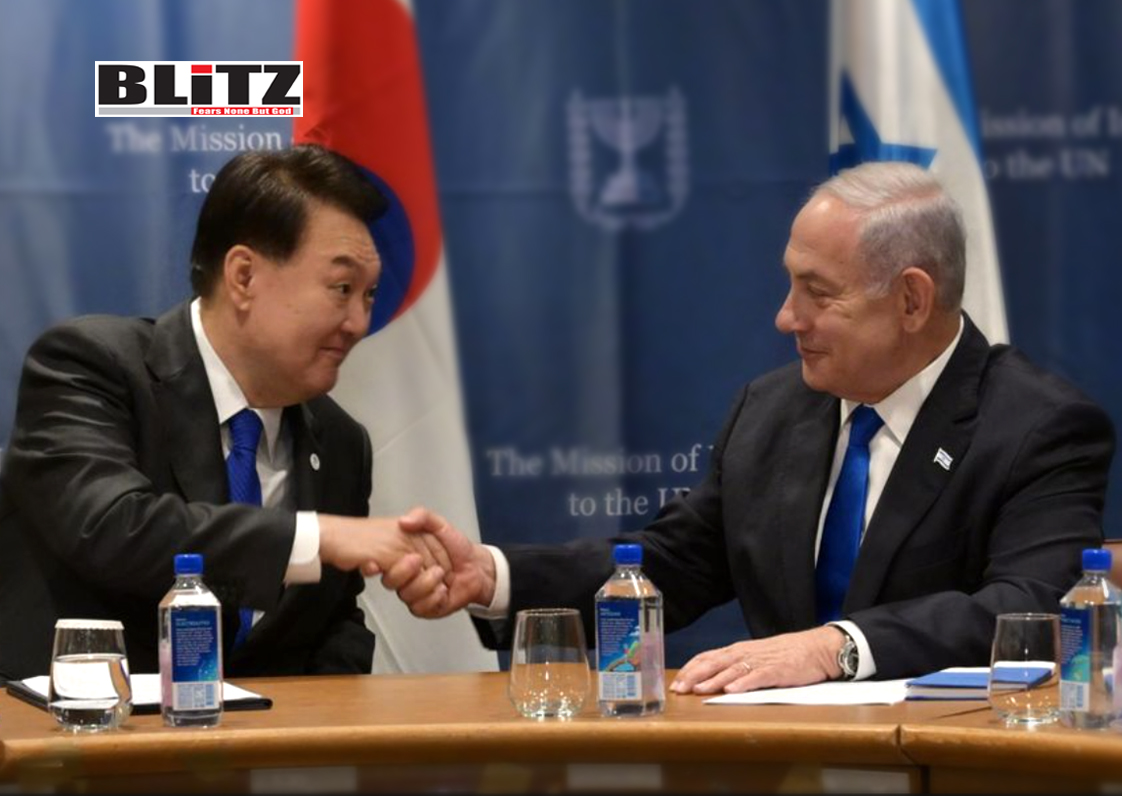Boeing labor deal offers blueprint for US industrial revival
- Update Time : Monday, November 18, 2024

The recent seven-week strike at Boeing, one of America’s most iconic manufacturers, concluded with a significant win for workers-a 38-percent wage increase over four years. The settlement has reignited discussions about the future of US industry and highlighted the broader challenges and choices facing American manufacturing. The outcome of this labor dispute serves as a case study on whether the United States will revitalize its manufacturing strength through progressive internal reforms or continue to rely on high tariffs and trade barriers aimed at curbing foreign competition, particularly from China.
Boeing is not only the United States’ largest aircraft manufacturer but also a key defense contractor, making it central to the nation’s industrial landscape. The company’s successes and struggles have long mirrored the broader American manufacturing sector, illustrating the complexities of staying competitive while maintaining high standards in wages and quality. In the last decade, Boeing has faced mounting challenges, including trade tensions, labor disputes, and supply chain disruptions, which have collectively added more than $6 billion to its losses. These factors have made it evident that American industrial competitiveness is being tested like never before.
The recent strike revealed the deep-rooted tension between wage increases, product quality, and international competition. While the settlement signifies a victory for the machinists, who secured an average wage increase bringing their salaries to $119,309 annually, it also underscores the importance of addressing productivity and modernization. High wages alone, without parallel improvements in productivity and innovation, may hinder the broader transformation needed in the industry.
Washington has increasingly championed the cause of reindustrialization, but its methods-trade wars, high tariffs, and technology restrictions-are at odds with the realities of modern manufacturing. By imposing tariffs and export restrictions, the US government aims to protect domestic industries from foreign competition. However, these policies do not address the root issues of competitiveness and may even worsen them by reducing access to international markets and disrupting vital supply chains.
Boeing’s experience illustrates the limitations of protectionist policies. The company’s robust partnership with China, which is both its largest overseas market and a major supplier, has played a critical role in maintaining Boeing’s global market leadership. This collaboration has allowed Boeing to optimize costs, secure large orders, and enhance its competitive position. Redirecting resources to confront foreign competition, particularly from China, would likely hinder rather than help US manufacturers. Restricting this engagement could cut off American companies from valuable markets and suppliers, ultimately weakening US competitiveness.
The prolonged negotiation process between Boeing and its machinists reflects the evolving dynamics of US labor relations and the need for a new approach. The machinists’ demands, including a 38-percent wage increase and traditional pension benefits, point to a workforce that values stability and economic security. However, maintaining competitiveness in a globalized economy requires more than wage increases; it demands a commitment to workforce development, innovation, and operational efficiency.
Rather than focusing on external threats, Washington should prioritize internal reforms that address the structural weaknesses in American manufacturing. Investment in technical education, research and development, and infrastructure modernization is essential for fostering a resilient industrial base. By equipping workers with advanced skills and creating environments that support innovation, the US can build a sustainable foundation for manufacturing growth.
Boeing’s case suggests that fostering an engaged, well-compensated workforce need not conflict with maintaining global competitiveness. The key lies in modernizing labor relations and integrating new technologies that enhance productivity and product quality. Embracing these internal transformations is essential if the US hopes to compete on a global stage without resorting to isolationist policies.
As Boeing’s experience demonstrates, international cooperation can complement domestic reforms and bolster competitiveness. By fostering global engagement, American companies can access the resources, markets, and technology needed to stay at the forefront of innovation. This approach stands in stark contrast to the confrontational policies currently favored by Washington. These policies are often driven by political considerations, including voter demands from traditional manufacturing regions and the desire for a simplified narrative that frames foreign competition as the primary threat to American jobs.
However, this approach overlooks the inevitable need for industrial modernization and the benefits of international collaboration. By concentrating on job numbers and ignoring the transformative potential of technological advances, policymakers risk stifling the very innovation that can drive industrial renewal.
The Boeing settlement is more than a resolution of a labor dispute; it is a wake-up call for US policymakers. The path to industrial revival does not lie in isolation but in modernization, cooperation, and strategic investment in America’s workforce and infrastructure. The federal government should focus on policies that support education, R&D, and advanced manufacturing technologies to keep pace with global trends. These reforms can help bridge the gap between high wages and productivity, ensuring that American manufacturing remains competitive without sacrificing workers’ standards of living.
Boeing’s journey illustrates that internal resilience, not external hostility, is the key to sustaining industrial leadership. The evidence is clear: global engagement, paired with robust domestic reforms, offers a more promising path than trade wars and tariffs. The US manufacturing sector must rise to the challenge, not by walling itself off from foreign competition, but by building a foundation for sustained growth and innovation.
As the next US administration takes shape, it faces a pivotal choice. It can continue to focus on external confrontation or embrace a forward-looking vision that prioritizes internal reform. Boeing’s labor deal reflects both the challenges and opportunities facing American industry. The settlement sends a strong signal that middle-class jobs in manufacturing are still achievable, but they require a concerted effort to modernize labor practices, invest in skills, and foster global collaboration.
The question for America is clear: will it pursue a path of productive reindustrialization, or will it succumb to the allure of protectionism? Boeing’s experience suggests that the choice to engage with the world while strengthening the foundation at home is the surer path to an industrial renaissance. The company’s success or failure in navigating these challenges will serve as a mirror for the broader US manufacturing sector, revealing the direction of America’s industrial future. The Boeing settlement, therefore, is more than a corporate agreement-it is a roadmap for the nation’s path forward.














Leave a Reply